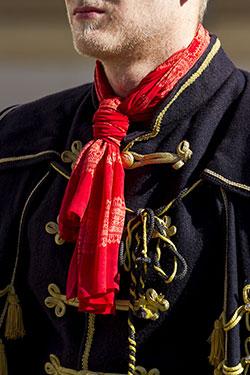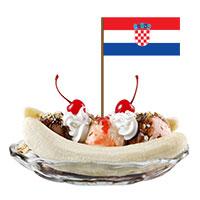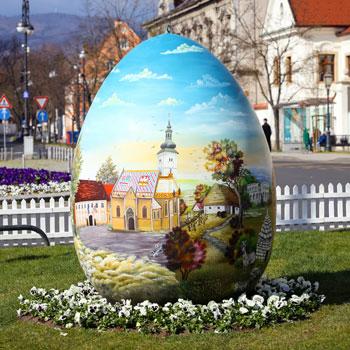The mechanical pencil and solid-ink fountain pen

Slavoljub (Eduard) Penkala (1871 – 1922), a famous inventor credited with more than 80 patents, was a naturalized Croat of Dutch-Polish descent: born as Eduard in what is now Slovakia, he later moved to Zagreb and took the Croatian name Slavoljub (="slavophile").
This prolific inventor came up with such things as the hot-water bottle (termofor in Croatian, his first registered patent), a braking system for trains, the annode battery, a type of bluing detergent, and even a rotating toothbrush (in an attempt to motivate his daughter Thea to brush her teeth!).
Despite this, he remains most famous for his invention of the first solid-ink fountain pen and the development of the mechanical pencil, known as an "automatic pencil" back then.
Together with a Croatian businessman named Edmund Moster he founded the Penkala-Moster Company, one of the biggest factories for pens and pencils in the world at that time. The company survives to the present day under the name TOZ Penkala.
 The necktie (Cravat)
The necktie (Cravat)
The cravat may not be a pure Croatian invention, since the history of wearing neckties dates back to the Roman empire, but the modern version of the cravat was widely popularised and spread throughout Europe by the Croats in the 17th century – more precisely during the Thirty Years' War (1618 – 1648).
Croatian mercenaries from the Croatian Military Frontier, enlisted in a French regiment during the reign of Louis XIII of France (r. 1610 – 1643), wore traditional scarves around their necks as a sign of identification. The always fashionable French immediately appreciated and quickly adopted this stylish accessory.
Even the famous Louis XIV of France (r. 1643 – 1715) adopted this fashion. The rest is history.
The word cravat (Croatian: kravata) originates from the French expression cravate, a misheard pronunciation of the French word Croate, meaning Croatian!
Cravats were mostly white until the 19th century when the English introduced a wide range of colours and different knotting styles. The Windsor knot, probably the most popular nowadays, was named after the Duke of Windsor – King Edward VIII (r. 1936), who preferred and popularised this style.
The parachute

It's thanks to another great Croatian inventor, Faust Vrančić (1551 – 1617), that falling from a great height was transformed from an existential crisis into a survivable, even enjoyable experience. Admit it, you would have never guessed that the parachute was a Croatian invention!
In his book Machinae Novae (New Machines) Vrančić, a Croatian bishop and polymath, suggested more than 50 machine-related inventions, accompanied with the adequate sketches. One of these sketches, Homo volantis (Flying man) shows a man parachuting from a brick tower (believed to be St Mark's Campanile in Venice) and represents an elaboration of an earlier parachute sketch by Leonardo da Vinci, dating back to around 1485.
It is believed that Vrančić tested his own parachute design and jumped from the St Mark's Campanile in 1617, at the age of 65. The simple parachute was born!

Banana Split
Wait ... what?
Ha ha, you're right, we're just kidding! :-D
The banana split has nothing to do with Split, a city in Croatia. It's a banana. And it's split. And it's in a yummy dessert with lots of ice-cream and whipped cream. And it's American, not Croatian. Myth busted!


 The necktie (Cravat)
The necktie (Cravat)





